BERLIN—When the famous fashion model walked into the studio, the reporter expected to hear an account of how a herdsman’s daughter from Somalia became a world-famous cover girl.
“What was the day that changed your life?” asked the reporter with a smile on her face. The model hesitated for a moment, and then told a story that would shock the world.
The above is a scene from Desert Flower, a nonfiction movie by German filmmaker Sherry Hormann, based on Somalian beauty Waris Dirie’s autobiographical bestseller of the same name.
“Desert Flower” tells the story of Dirie’s early life—from childhood in Somalia to her rise to become one of the world’s highest paid supermodels. In spite of her financial success, her childhood secret haunted her.
At the height of her career, she exposed a gruesome Somali tradition that she experienced as a young girl—female genital mutilation (also known as female genital cutting or female genital circumcision.)
Dirie decided to dedicate her life to stop this ritual, working with the United Nations as well as creating foundations of her own.
Recently, The Epoch Times caught up with the personable filmmaker and screenwriter Sherry Hormann to discuss transforming Dirie’s story for the big screen.
“What was the day that changed your life?” asked the reporter with a smile on her face. The model hesitated for a moment, and then told a story that would shock the world.
The above is a scene from Desert Flower, a nonfiction movie by German filmmaker Sherry Hormann, based on Somalian beauty Waris Dirie’s autobiographical bestseller of the same name.
“Desert Flower” tells the story of Dirie’s early life—from childhood in Somalia to her rise to become one of the world’s highest paid supermodels. In spite of her financial success, her childhood secret haunted her.
At the height of her career, she exposed a gruesome Somali tradition that she experienced as a young girl—female genital mutilation (also known as female genital cutting or female genital circumcision.)
Dirie decided to dedicate her life to stop this ritual, working with the United Nations as well as creating foundations of her own.
Recently, The Epoch Times caught up with the personable filmmaker and screenwriter Sherry Hormann to discuss transforming Dirie’s story for the big screen.
Planning the Movie
Telling Dirie’s story presented both challenges and satisfaction for Hormann.
“Once I had read Dirie’s book, my interest grew … I felt I was given a gift, and felt hugely blessed at the opportunity to make a film from the story,” recounts Hormann on how the project got underway.
Dirie’s story is truly one of overcoming odds. At a young age, she ran away from home in rural Somalia to escape an arranged marriage, and she was eventually able to immigrate to Europe to start a new life.
She was truly in survival mode, working as a child to make ends meet, until one day her luck turned when a famous fashion photographer spotted her. Recreating these dramatic life events presented difficulties that Hormann would need to overcome.
“The problem comes when making a film about a living person—one realizes the effect of the life experiences the person went through. I do not know the person, nor did I know the 12-year-old when she just had arrived in Europe,” explains Hormann.
“She was unsure of herself, lived in fear, and did not know anything about the ins and outs of Western culture. That means I had to retreat—meaning the portrayal on the big screen needs to show a famous woman prior to her international success.”
Rising from rural Somalia to Europe’s most exclusive runways requires more than stunning beauty. It also takes the type of intelligence one can’t learn in a classroom.
“Waris was born in the desert and had been a goat herder. Unlike us, she lacked any education. She is by no means an intellectual now. She relies completely on her gut instincts—she senses things immediately. She is honest, truthful, and considers the correct path. All these are her gut instincts.”
Hormann goes on to explain how working with Dirie required her to strip any preconceived notions she had of the supermodel, and discover her with a blank slate. She describes their first meeting as a long, and occasionally awkward two hours, where Dirie would allow long gaps of silence.
“Perhaps she did this deliberately, to see if I would persevere. Now I know this was like a test,” explains Hormann of their first meeting. “No arrogance, merely distance. It meant she wanted me to discover her anew. Not like the media, but wanted me to discover her real persona.”
Dirie’s unique style forced Hormann to adapt when doing her research on her subject.
“I met her frequently. She is not the type of person to sit at a table, taking notes, hold lengthy conversations, or even speak into a recording machine. Instead, we took long walks through Vienna where she lived at the time. I was not permitted to record our conversations, either. I had to memorize everything and recorded it in my hotel room in the evening.”
Clearly a film about Dirie’s life has aspects of the horror and shame she endured as a victim of female genital mutilation (FGM). Yet the larger theme is not quite so narrow. When asked what that more overarching theme was, Hormann lit up.
“That is a beautiful question. The theme is courage!” she beamed.
“Once I had read Dirie’s book, my interest grew … I felt I was given a gift, and felt hugely blessed at the opportunity to make a film from the story,” recounts Hormann on how the project got underway.
Dirie’s story is truly one of overcoming odds. At a young age, she ran away from home in rural Somalia to escape an arranged marriage, and she was eventually able to immigrate to Europe to start a new life.
She was truly in survival mode, working as a child to make ends meet, until one day her luck turned when a famous fashion photographer spotted her. Recreating these dramatic life events presented difficulties that Hormann would need to overcome.
“The problem comes when making a film about a living person—one realizes the effect of the life experiences the person went through. I do not know the person, nor did I know the 12-year-old when she just had arrived in Europe,” explains Hormann.
“She was unsure of herself, lived in fear, and did not know anything about the ins and outs of Western culture. That means I had to retreat—meaning the portrayal on the big screen needs to show a famous woman prior to her international success.”
Rising from rural Somalia to Europe’s most exclusive runways requires more than stunning beauty. It also takes the type of intelligence one can’t learn in a classroom.
“Waris was born in the desert and had been a goat herder. Unlike us, she lacked any education. She is by no means an intellectual now. She relies completely on her gut instincts—she senses things immediately. She is honest, truthful, and considers the correct path. All these are her gut instincts.”
Hormann goes on to explain how working with Dirie required her to strip any preconceived notions she had of the supermodel, and discover her with a blank slate. She describes their first meeting as a long, and occasionally awkward two hours, where Dirie would allow long gaps of silence.
“Perhaps she did this deliberately, to see if I would persevere. Now I know this was like a test,” explains Hormann of their first meeting. “No arrogance, merely distance. It meant she wanted me to discover her anew. Not like the media, but wanted me to discover her real persona.”
Dirie’s unique style forced Hormann to adapt when doing her research on her subject.
“I met her frequently. She is not the type of person to sit at a table, taking notes, hold lengthy conversations, or even speak into a recording machine. Instead, we took long walks through Vienna where she lived at the time. I was not permitted to record our conversations, either. I had to memorize everything and recorded it in my hotel room in the evening.”
Clearly a film about Dirie’s life has aspects of the horror and shame she endured as a victim of female genital mutilation (FGM). Yet the larger theme is not quite so narrow. When asked what that more overarching theme was, Hormann lit up.
“That is a beautiful question. The theme is courage!” she beamed.
Filming in Africa
Courage doesn’t just apply to the movie’s protagonist but also to its filmmaker. Taking on such a controversial topic and filming on location may have discouraged a more timid person.
“If I flee each time I sense fear, then I don’t live, but merely exist,” says Hormann.
Yet the perils she experienced definitely pushed her to the limits of safety.
“Civil war and anarchy in Somalia prevented me from traveling there. But I was at the border of Somalia,” she says.
In one instance, her crew was even attacked with stones while filming on set.
“That was gruesome. It happened in Djibouti where we recreated the Muqdisho marketplace. It looks just like Somalia. We had police protection and thought we were safe, but we were not veiled (as is customary attire in this part of the world).
“We did wear long pants and long-sleeved shirts according to cultural traditions of modesty, even though it was 110 degrees. We stood at the marketplace and let the cameras roll. But suddenly my assistant disappeared. He was actually lying on the ground [bludgeoned by stones].”
Hormann explained that she chose to be transparent about the topic of the film they were shooting despite the hostilities from a minority of the locals who saw a film about FGM as an affront. To help with production and safety, she then surrounded her crew with supportive locals as well as hired police.
“You must understand that we made this movie in a location where food is either scarce or practically unavailable—where poverty is the only topic. And here we are the ‘rich whites’ and we want to portray something about their native culture.”
Working with the locals and including them in the cast was key to authentically recreating Dirie’s childhood experience, according to Hormann.
“For instance, the woman who plays the role of the circumciser—she had done nothing else all her life except cut children. She agreed to be in the film. I wanted a genuine person, someone authentic, not an actress. She was the only one.
“As she stood in my room and the translator explained [the film and her role], she agreed. I asked her why. She replied, ‘Perhaps to pay back a tiny portion of what I have done.’”
Hormann also had her challenges with the actors she cast to play Dirie’s father. “He came on the set one day and demanded one million dollars at the end of the day. Where would I get that kind of money? Does he expect me to print that overnight!” Hormann chuckled.
“Then the replacement actor, as a good Muslim, went to prayers during each shooting. We were rolling the cameras, and he was suddenly gone! Those are things we in the West are unprepared for.”
Of course, the entire film hinges on the casting of the lead actor to play Dirie. Hormann auditioned 1,200 different women for the role. Ultimately, the job went to an Ethiopian model and actress named Liya Kebede.
“On the one hand, she had to represent innocence; on the other hand, she had to portray a believable fashion model. Her physical dimensions and a certain beauty were requisites, as well as acting talent. She ended up taking several months of acting classes at a New York school because she had to bring a believable portrayal of her address to the United Nations regarding female genital mutilation.
“She had to portray the gamut of Waris’s many roles. I had looked at many, many women to find the right one to fill the position.”
“If I flee each time I sense fear, then I don’t live, but merely exist,” says Hormann.
Yet the perils she experienced definitely pushed her to the limits of safety.
“Civil war and anarchy in Somalia prevented me from traveling there. But I was at the border of Somalia,” she says.
In one instance, her crew was even attacked with stones while filming on set.
“That was gruesome. It happened in Djibouti where we recreated the Muqdisho marketplace. It looks just like Somalia. We had police protection and thought we were safe, but we were not veiled (as is customary attire in this part of the world).
“We did wear long pants and long-sleeved shirts according to cultural traditions of modesty, even though it was 110 degrees. We stood at the marketplace and let the cameras roll. But suddenly my assistant disappeared. He was actually lying on the ground [bludgeoned by stones].”
Hormann explained that she chose to be transparent about the topic of the film they were shooting despite the hostilities from a minority of the locals who saw a film about FGM as an affront. To help with production and safety, she then surrounded her crew with supportive locals as well as hired police.
“You must understand that we made this movie in a location where food is either scarce or practically unavailable—where poverty is the only topic. And here we are the ‘rich whites’ and we want to portray something about their native culture.”
Working with the locals and including them in the cast was key to authentically recreating Dirie’s childhood experience, according to Hormann.
“For instance, the woman who plays the role of the circumciser—she had done nothing else all her life except cut children. She agreed to be in the film. I wanted a genuine person, someone authentic, not an actress. She was the only one.
“As she stood in my room and the translator explained [the film and her role], she agreed. I asked her why. She replied, ‘Perhaps to pay back a tiny portion of what I have done.’”
Hormann also had her challenges with the actors she cast to play Dirie’s father. “He came on the set one day and demanded one million dollars at the end of the day. Where would I get that kind of money? Does he expect me to print that overnight!” Hormann chuckled.
“Then the replacement actor, as a good Muslim, went to prayers during each shooting. We were rolling the cameras, and he was suddenly gone! Those are things we in the West are unprepared for.”
Of course, the entire film hinges on the casting of the lead actor to play Dirie. Hormann auditioned 1,200 different women for the role. Ultimately, the job went to an Ethiopian model and actress named Liya Kebede.
“On the one hand, she had to represent innocence; on the other hand, she had to portray a believable fashion model. Her physical dimensions and a certain beauty were requisites, as well as acting talent. She ended up taking several months of acting classes at a New York school because she had to bring a believable portrayal of her address to the United Nations regarding female genital mutilation.
“She had to portray the gamut of Waris’s many roles. I had looked at many, many women to find the right one to fill the position.”
Looking Back and Looking Ahead
Hormann also shared how working on a film about Dirie’s life would help her have a better sense of her own life’s purpose.
“Working this long on a film changes the maker. One becomes more tolerant—kinder in some respects, but also more honest and radical … One realizes that life is a gift.”
Next up for Hormann is adapting a nonfiction book for the screen about renowned Stanford psychologist Paul Watzlawick.
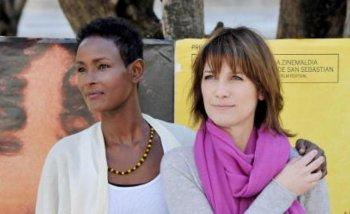
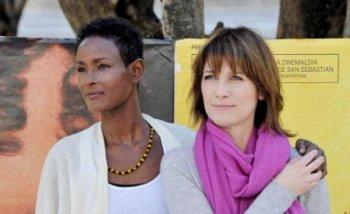
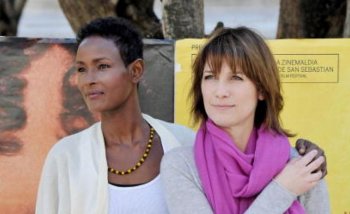
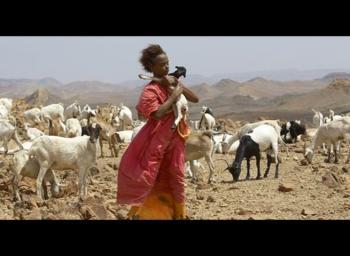
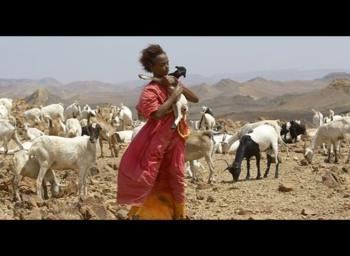
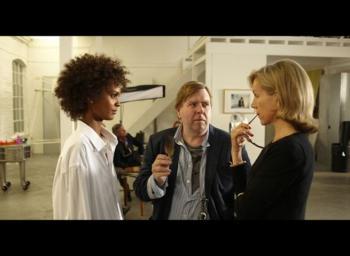
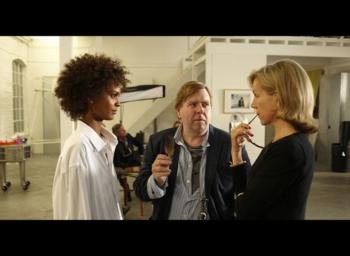



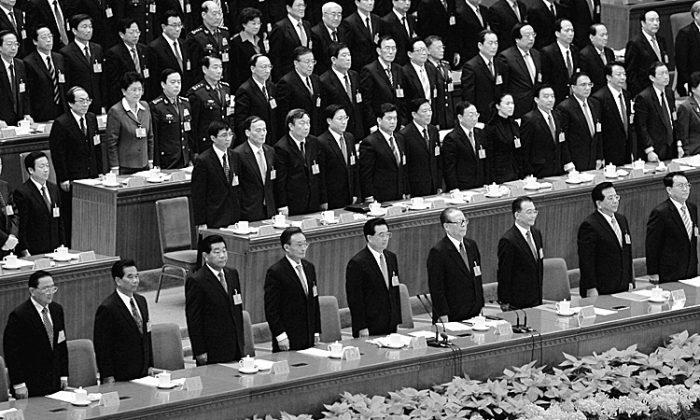
Friends Read Free